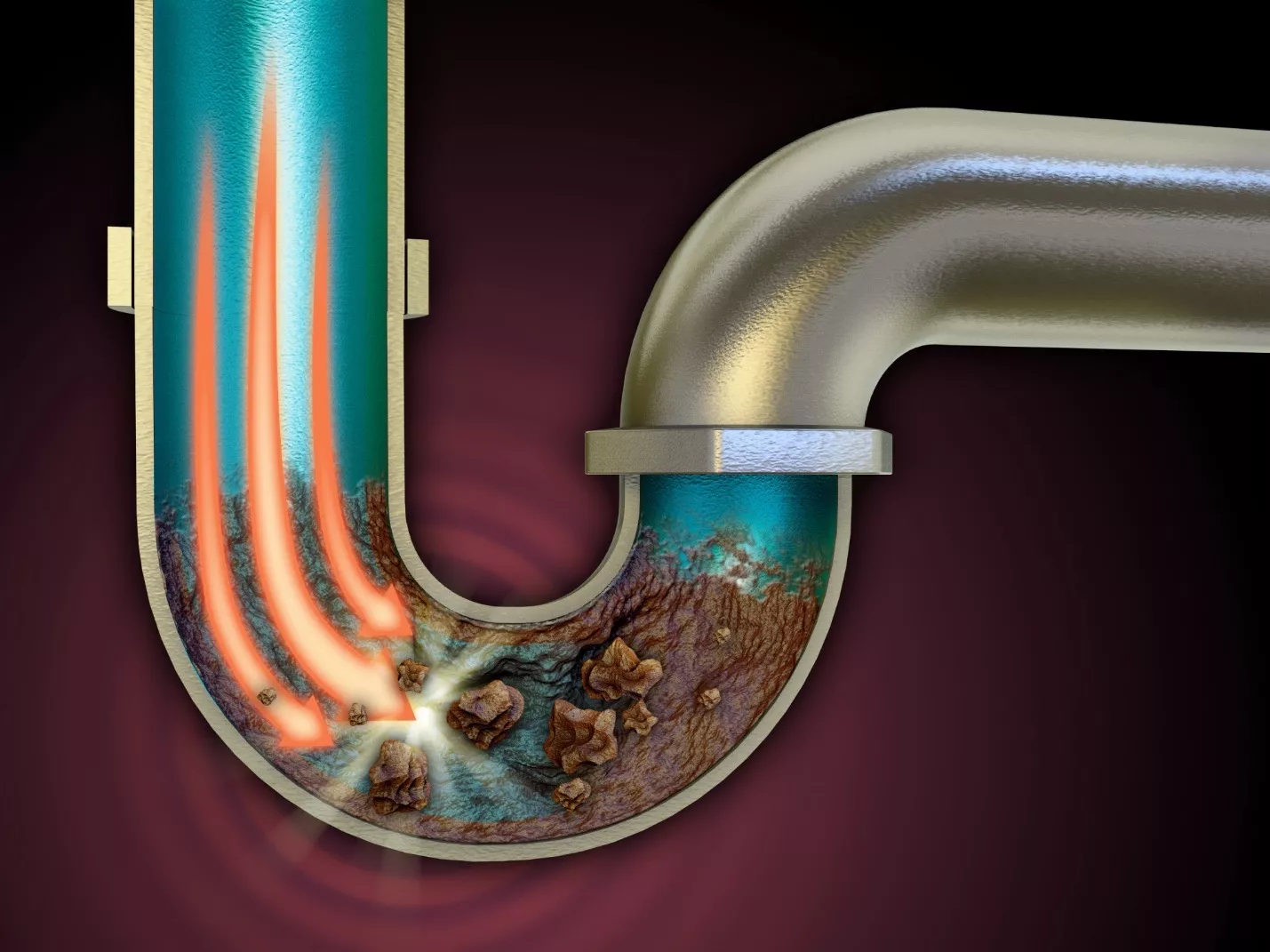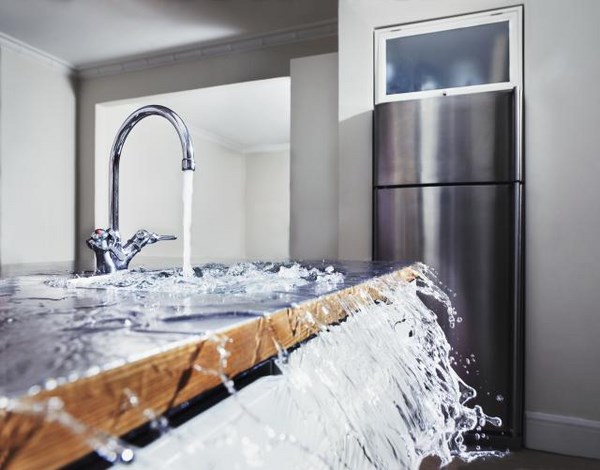If you've ever dealt with a clogged bathroom sink, you know how frustrating it can be. The water just won't drain, and you're left with a dirty, stagnant pool in your sink. In moments like these, it's tempting to reach for the nearest bottle of Drano and pour it down the drain. But can you really use Drano in a bathroom sink? Let's find out. Can you pour Drano down a bathroom sink?
Drano is a popular choice for unclogging drains, and it can be used in bathroom sinks as well. To use Drano in a bathroom sink, start by removing any standing water from the sink using a cup or bowl. Next, pour half a bottle of Drano down the drain, making sure to avoid any contact with your skin or eyes. Let the Drano sit in the drain for about 15 minutes, then flush the drain with hot water. This should help dissolve and clear the clog. How to unclog a bathroom sink with Drano
Drano is specifically designed to dissolve hair and other organic matter that can cause clogs in drains. This makes it a great option for unclogging bathroom sinks, as hair and soap scum are common culprits for clogs in this area. However, Drano may not be as effective for more stubborn clogs caused by non-organic materials, such as solid objects or hardened grease. Drano for bathroom sink clogs
When used correctly, Drano is generally safe for bathroom sinks. It is important to follow the instructions carefully and avoid any contact with the product. If any Drano comes into contact with your skin or eyes, immediately rinse with water for 15 minutes and seek medical attention if necessary. Additionally, Drano should not be used in sinks with a garbage disposal, as it can damage the disposal unit. Is Drano safe for bathroom sinks?
As mentioned earlier, it is important to follow the instructions when using Drano in a bathroom sink. This includes pouring the product slowly and directly down the drain, as well as avoiding any contact with your skin or eyes. It is also recommended to use Drano in a well-ventilated area and to avoid inhaling the fumes. After using Drano, be sure to thoroughly rinse the sink with hot water to ensure any leftover product is flushed out. Using Drano in a bathroom sink
While Drano is a popular choice for unclogging bathroom sinks, there are other options available on the market. These include other chemical drain cleaners, as well as more natural alternatives such as vinegar and baking soda. Ultimately, the effectiveness of these alternatives may vary depending on the cause and severity of the clog. It is always important to follow the instructions and use caution when using any type of drain cleaner. Drano vs. other bathroom sink clog removers
Drano can also be used as a preventative measure to keep your bathroom sink free from clogs. It is recommended to use Drano once a month to help dissolve any buildup of hair and soap scum in the drain. This can help prevent future clogs and keep your sink in good condition. However, it is important to avoid overusing Drano, as it can be harmful to your plumbing if used too frequently. Drano for bathroom sink maintenance
The best way to deal with clogs in bathroom sinks is to prevent them from happening in the first place. Some tips for preventing clogs include using a drain cover to catch hair and debris, avoiding pouring grease or cooking oil down the drain, and refraining from flushing anything other than toilet paper down the toilet. Regularly cleaning and maintaining your sink can also help prevent clogs from forming. How to prevent clogs in bathroom sinks
If you're looking for an alternative to Drano for unclogging your bathroom sink, there are several options available. As mentioned earlier, vinegar and baking soda can be an effective natural solution. You can also try using a plunger to dislodge a clog, or a drain snake to physically remove the blockage. If these methods do not work, it may be time to call a professional plumber. Drano alternatives for bathroom sink clogs
While Drano can be effective for most bathroom sink clogs, there are some cases where it may not be enough. If you have a particularly stubborn or recurring clog, it may be best to seek professional help. A plumber will have the necessary tools and expertise to properly diagnose and fix the issue without causing further damage to your plumbing. They can also provide advice on how to prevent future clogs. Drano for tough bathroom sink clogs
The Importance of Proper Drain Maintenance for a Well-Designed Bathroom

Why Drano is Not the Solution for Your Bathroom Sink
 When it comes to designing a bathroom, often the focus is on aesthetics and functionality. However, one key component that is often overlooked is proper drain maintenance. A clogged sink can not only be a nuisance, but it can also lead to costly repairs and potential health hazards. This is where products like Drano come in, promising a quick and easy fix. But can you really pour Drano down a bathroom sink? The answer is yes, but it's not the best solution and can actually do more harm than good.
Drano is a chemical drain cleaner that uses a combination of sodium hydroxide, sodium hypochlorite, and aluminum to dissolve hair, soap scum, and other debris that may be clogging your drain.
While it may seem like the perfect solution for your clogged bathroom sink, it can actually cause more damage in the long run. The harsh chemicals in Drano can erode your pipes and potentially create leaks. This not only leads to costly repairs, but it can also cause health hazards if the chemicals seep into your water supply.
Furthermore, Drano may not even be effective in unclogging your bathroom sink.
It's designed to work on organic materials like hair and soap scum, but if your clog is caused by something else, such as a foreign object or a buildup of mineral deposits, Drano will not be able to dissolve it. This can result in repeated use of the product, which can further damage your pipes and create a vicious cycle of clogs and drain cleaner.
So, what is the best solution for a clogged bathroom sink?
Prevention and regular maintenance.
One of the best ways to prevent clogs in your bathroom sink is to use a drain stopper to catch hair and other debris before it goes down the drain. You can also use a natural drain cleaner, such as a mixture of baking soda and vinegar, to keep your pipes clear. Regularly cleaning out the drain stopper and using a plunger can also help prevent clogs.
In conclusion,
while Drano may seem like a quick fix for your clogged bathroom sink, it's not the best solution for a well-designed bathroom.
Proper drain maintenance and prevention are key to keeping your bathroom sink functioning properly and avoiding costly repairs. Remember to avoid using harsh chemicals and opt for natural solutions to keep your pipes and water supply safe.
When it comes to designing a bathroom, often the focus is on aesthetics and functionality. However, one key component that is often overlooked is proper drain maintenance. A clogged sink can not only be a nuisance, but it can also lead to costly repairs and potential health hazards. This is where products like Drano come in, promising a quick and easy fix. But can you really pour Drano down a bathroom sink? The answer is yes, but it's not the best solution and can actually do more harm than good.
Drano is a chemical drain cleaner that uses a combination of sodium hydroxide, sodium hypochlorite, and aluminum to dissolve hair, soap scum, and other debris that may be clogging your drain.
While it may seem like the perfect solution for your clogged bathroom sink, it can actually cause more damage in the long run. The harsh chemicals in Drano can erode your pipes and potentially create leaks. This not only leads to costly repairs, but it can also cause health hazards if the chemicals seep into your water supply.
Furthermore, Drano may not even be effective in unclogging your bathroom sink.
It's designed to work on organic materials like hair and soap scum, but if your clog is caused by something else, such as a foreign object or a buildup of mineral deposits, Drano will not be able to dissolve it. This can result in repeated use of the product, which can further damage your pipes and create a vicious cycle of clogs and drain cleaner.
So, what is the best solution for a clogged bathroom sink?
Prevention and regular maintenance.
One of the best ways to prevent clogs in your bathroom sink is to use a drain stopper to catch hair and other debris before it goes down the drain. You can also use a natural drain cleaner, such as a mixture of baking soda and vinegar, to keep your pipes clear. Regularly cleaning out the drain stopper and using a plunger can also help prevent clogs.
In conclusion,
while Drano may seem like a quick fix for your clogged bathroom sink, it's not the best solution for a well-designed bathroom.
Proper drain maintenance and prevention are key to keeping your bathroom sink functioning properly and avoiding costly repairs. Remember to avoid using harsh chemicals and opt for natural solutions to keep your pipes and water supply safe.












































































:max_bytes(150000):strip_icc()/Patterned-accent-wall-58e430043df78c5162addf0b.png)

